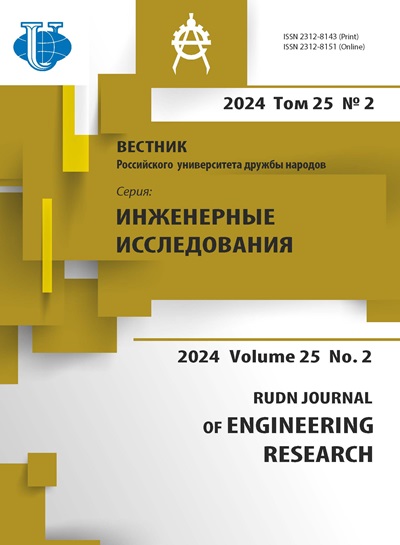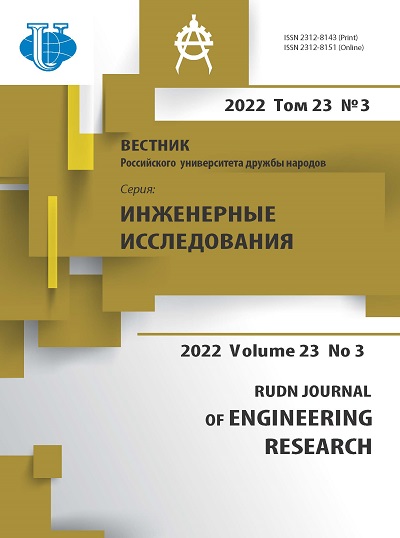Актуальность применения возобновляемых топлив в энергетических комплексах
- Авторы: Разуваев А.В.1, Редько И.Я.2, Краснолудский Н.В.1, Костин Д.А.1
-
Учреждения:
- Балаковский инженерно-технологический институт - филиал Национального исследовательского ядерного университета «МИФИ»
- Южно-Уральский государственный университет
- Выпуск: Том 23, № 3 (2022)
- Страницы: 191-197
- Раздел: Статьи
- URL: https://journals.rudn.ru/engineering-researches/article/view/33074
- DOI: https://doi.org/10.22363/2312-8143-2022-23-3-191-197
Цитировать
Полный текст
Аннотация
Представлен анализ и эффективность применения когенерационных энергоустановок и альтернативных источников электроэнергии. Отмечены документы по актуальности внедрения энергоэффективных мероприятий в экономики различных стран. Обоснована перспективность применения альтернативных и возобновляемых видов топлива с учетом эффективности их применения в различных энергетических системах и комплексах. Такие мероприятия способствуют, с одной стороны, экономии добываемых в земле углеводородных топлив и продлению сроков их использования, а с другой стороны - развитию и применению альтернативных энерготехнологических комплексов с использованием в них возобновляемого топлива. Подобным топливом могут служить дрова. Приведены характеристики дров в соответствующих таблицах, что дает возможность уже на стадии проработки оценить эффективность применения энергокомплекса на дровах в зависимости от их сорта и территории его возрастания. Кроме того, характеристики дров позволят оценить необходимое их количество и территорию для складирования и заготовки. На основании полученных данных сделан вывод о необходимости разработки и создания энерготехнологических комплексов на базе паровых поршневых машин для различных малых и средних предприятий. Проектные предложения по энерготехнологическому комплексу на базе паровых поршневых машин представлены кратко, оценен экономический эффект по его применению на месте эксплуатации.
Об авторах
Александр Валентинович Разуваев
Балаковский инженерно-технологический институт - филиал Национального исследовательского ядерного университета «МИФИ»
Email: vipdomik@mail.ru
ORCID iD: 0000-0002-4593-0653
доктор технических наук, профессор кафедры технологии и автоматизации машиностроения
Российская Федерация, 413850, Балаково, ул. Чапаева, д. 140Иван Яковлевич Редько
Южно-Уральский государственный университет
Автор, ответственный за переписку.
Email: redko_iya@mail.ru
ORCID iD: 0000-0002-0259-1268
доктор технических наук, профессор, руководитель направления стратегии развития электроэнергетики
Российская Федерация, 454080, Челябинск, пр-кт Ленина, д. 76Николай Викторович Краснолудский
Балаковский инженерно-технологический институт - филиал Национального исследовательского ядерного университета «МИФИ»
Email: krasnoludsky@yandex.ru
SPIN-код: 9297-4701
кандидат технических наук, доцент кафедры подъемно-транспортных, строительных и дорожных машин Российская Федерация, 413850, Балаково, ул. Чапаева, д. 140
Дмитрий Александрович Костин
Балаковский инженерно-технологический институт - филиал Национального исследовательского ядерного университета «МИФИ»
Email: kostin8842@yandex.ru
SPIN-код: 4733-6124
кандидат технических наук, доцент кафедры атомной энергетики Российская Федерация, 413850, Балаково, ул. Чапаева, д. 140
Список литературы
- Разуваев А.В., Редько И.Я. Энергетическая безопасность объектов // Молодой ученый. 2015. № 23.1 (103.1). С. 37-39.
- Разуваев А.В. Анализ эффективности паропоршневой энергетической установки // Вестник Кыргызско-Российского университета. 2016. Т. 16. № 9. С. 56-59.
- Razuvaev A.V., Kobzev R.A., Redko I.Ya. Multifunctional energy-technological complex on the basis of a steam-piston power plant for autonomous facilities of various purposes // Journal of Physics: Conference Series. 2018. Vol. 1111. Issue 1. Article number: 012050. https://doi.org/10.1088/1742-6596/1111/1/012050
- Razuvaev A.V., Kobzev R.A., Redko I.Ya. Economic efficiency evaluation of applying the general-purpose heat and power plant based on the reciprocating steam engine // Journal of Physics: Conference Series. 2020. Vol. 1652. Article number: 012023. https://doi.org/10.1088/1742-6596/1652/1/012023
- Редько И.Я., Разуваев А.В. Актуальность применения паровых машин // Энергетик. 2019. № 1. С. 27-30.
- Крутихина Т.А., Разуваев А.В., Кобзев Р.А. Универсальный теплоэнергетический комплекс на базе паропоршневой машины // Современные технологии и автоматизация в технике, управлении и образовании: cборник трудов II Международной научно-практической конференции (Балаково, 18 декабря 2019 г.): в 2. T. 1. Балаково, 2020. C. 47-51.
- Разуваев А.В., Редько И.Я. Актуальность создания многофункциональных энерготехнологических комплексов на базе паропоршневой машины // Сантехника. Отопление. Кондиционирование. 2022. № 2. С. 60-63.
- Жигалов В.А. Применение поршневых паровых машин для прямого привода вспомогательных механизмов ТЭС // Новости теплоснабжения. 2020. № 3 (223). С. 27-30.
- Кропачев А. Паропоршневые технологии в малых когенерационных установках // Аква-Терм. 2017. № 6 (100). С. 20-24.
- Передерий С. Паровые установки для выработки электро- и тепловой энергии // Леспром-инфо. 2017. № 6 (128). С. 126-130.
- Жигалов В.А. Энергоснабжение угледобывающих предприятий. Использование тепловых электростанций с поршневыми паровыми машинами // Уголь. 2017. № 11. С. 68-72. https://doi.org/10.18796/0041-5790-2017-11-68-70















